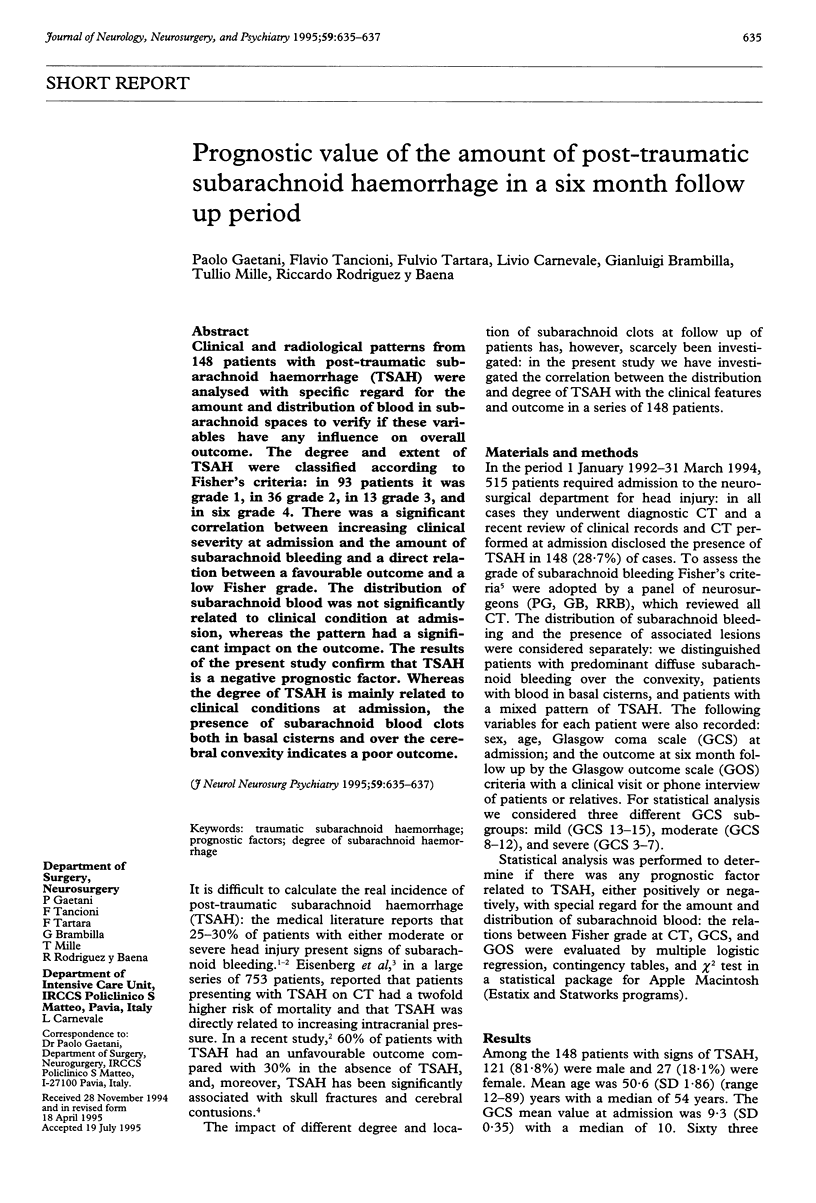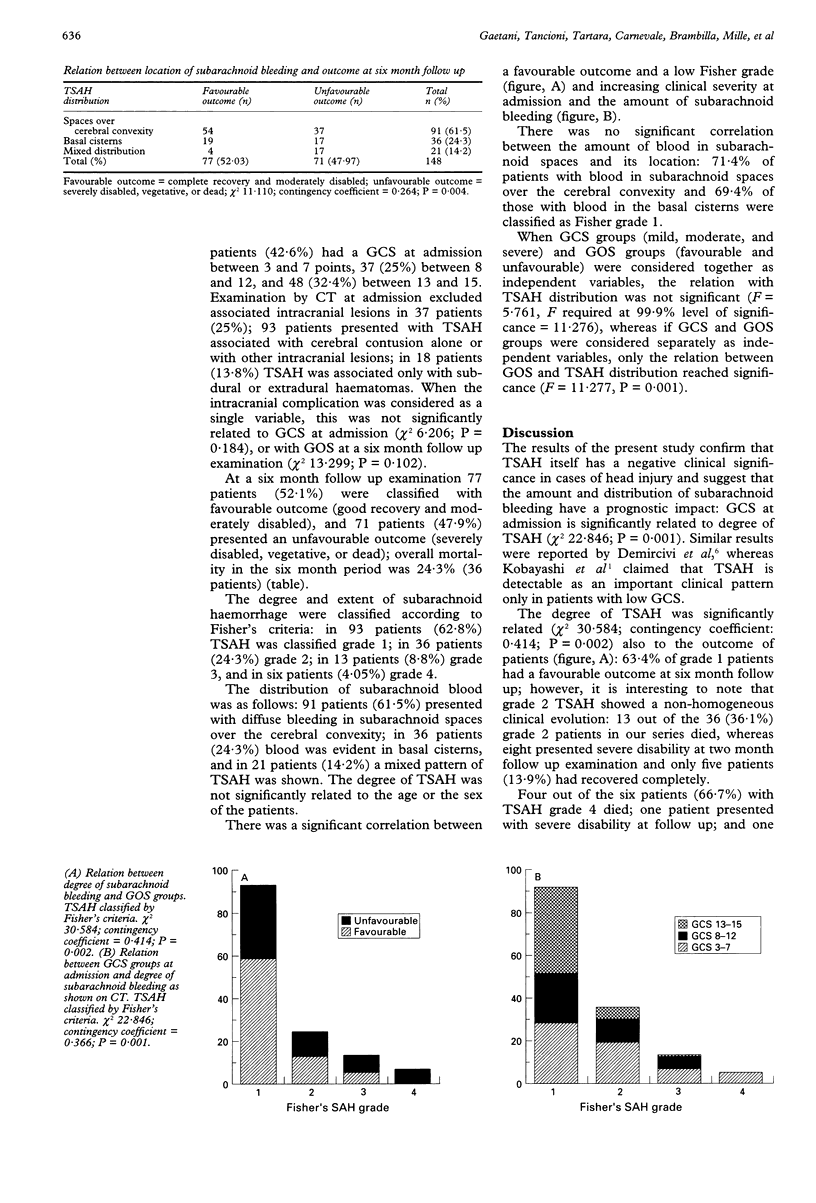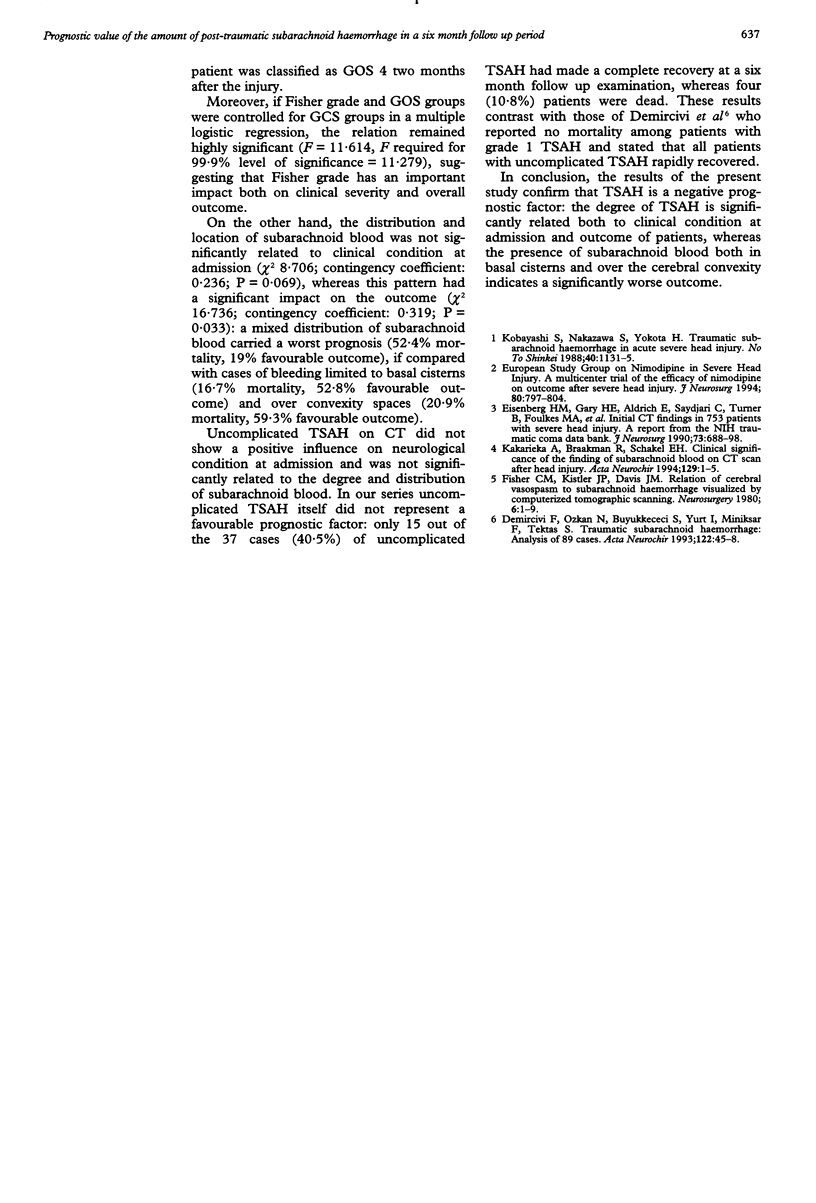Abstract
Clinical and radiological patterns from 148 patients with post-traumatic subarachnoid haemorrhage (TSAH) were analysed with specific regard for the amount and distribution of blood in subarachnoid spaces to verify if these variables have any influence on overall outcome. The degree and extent of TSAH were classified according to Fisher's criteria: in 93 patients it was grade 1, in 36 grade 2, in 13 grade 3, and in six grade 4. There was a significant correlation between increasing clinical severity at admission and the amount of subarachnoid bleeding and a direct relation between a favourable outcome and a low Fisher grade. The distribution of subarachnoid blood was not significantly related to clinical condition at admission, whereas the pattern had a significant impact on the outcome. The results of the present study confirm that TSAH is a negative prognostic factor. Whereas the degree of TSAH is mainly related to clinical conditions at admission, the presence of subarachnoid blood clots both in basal cisterns and over the cerebral convexity indicates a poor outcome.
Full text
PDF


Selected References
These references are in PubMed. This may not be the complete list of references from this article.
- Demirçivi F., Ozkan N., Büyükkeçeci S., Yurt I., Miniksar F., Tektaş S. Traumatic subarachnoid haemorrhage: analysis of 89 cases. Acta Neurochir (Wien) 1993;122(1-2):45–48. doi: 10.1007/BF01446985. [DOI] [PubMed] [Google Scholar]
- Eisenberg H. M., Gary H. E., Jr, Aldrich E. F., Saydjari C., Turner B., Foulkes M. A., Jane J. A., Marmarou A., Marshall L. F., Young H. F. Initial CT findings in 753 patients with severe head injury. A report from the NIH Traumatic Coma Data Bank. J Neurosurg. 1990 Nov;73(5):688–698. doi: 10.3171/jns.1990.73.5.0688. [DOI] [PubMed] [Google Scholar]
- Fisher C. M., Kistler J. P., Davis J. M. Relation of cerebral vasospasm to subarachnoid hemorrhage visualized by computerized tomographic scanning. Neurosurgery. 1980 Jan;6(1):1–9. doi: 10.1227/00006123-198001000-00001. [DOI] [PubMed] [Google Scholar]
- Kakarieka A., Braakman R., Schakel E. H. Clinical significance of the finding of subarachnoid blood on CT scan after head injury. Acta Neurochir (Wien) 1994;129(1-2):1–5. doi: 10.1007/BF01400864. [DOI] [PubMed] [Google Scholar]
- Kobayashi S., Nakazawa S., Yokota H., Isayama K., Yano M., Otsuka T. [Traumatic subarachnoid hemorrhage in acute severe head injury]. No To Shinkei. 1988 Dec;40(12):1131–1135. [PubMed] [Google Scholar]


